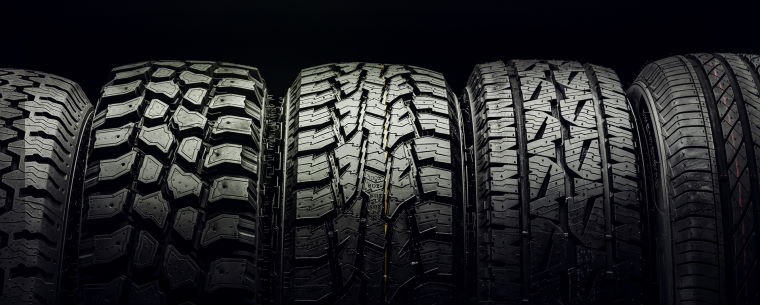What Does XL Mean on Tyres?
Bradley Jando | Tuesday 15th June 2021 10:27am

As drivers, we’re required to know about a huge amount of things: how to change a wheel, how to check oil & liquid levels, or how to check tyre condition and pressure. Whether we know how to do these things, and whether we do them or not, however, is a different matter altogether. On this thread, you may have heard about XL tyres – but what exactly are they?
XL (or Reinforced) tyres are ‘extra load’ tyres – they indicate that a tyre is reinforced to be able to withstand a higher load than other tyres of the same size. This is done through a number of ways, but most usually by adding strengthening material to either the tyre’s bead or face.
Let’s look at some of the ways that they’re actually reinforced, and why you might need them.
What Does XL Mean on Tyres?
The letters XL on a tyre indicate that it is reinforced to handle a greater load than regular tyres of the same size. This is accomplished in a variety of ways, the most common of which is by adding reinforcing material to the tyre's bead or face.
How are tyres reinforced?
Originally, tyres were made out of solid rubber and, as you can imagine, this was not a comfortable ride. So with the invention of pneumatic tyres came a significant improvement in comfort, but early tyres were also really prone to punctures and blowouts. So innovation needed to happen.
Nowadays, that innovation is still going strong, and we have a proliferation of incredible tyre designs and constructions. Fundamentally, all tyres are constructed around a mesh of something flexible – usually a polyester fabric. This gives something for the rubber to hold on to because, without it, the rubber would just split.
Then there’s the issue of keeping the tyre on the wheel itself. This is done through a steel-reinforced bead around the inside lip of the tyre – the bead hooks into a groove on the wheel that locks the tyre in place once it’s inflated.
The most common ways to reinforce the tyre is to add more of the mesh material, use a different, stronger material, use a stronger material for the tyre bead, or add more rubber to the face of the tyre – or a combination of all of them!
What are XL tyres for?
Essentially, XL tyres aren’t ‘extra large’ tyres, but ‘extra load’. So they’re used when you anticipate your car needing to carry more weight. Now, it’s unusual to switch between a set of ‘normal’ tyres and a set of XL tyres, but it depends on whether you regularly carry heavy loads or not.
For example, if you regularly commute to work with heavy things in your car or van – such as tools - then you likely need to consider getting XL tyres.
It’s worth noting, however, that you should never exceed the maximum load rating for your vehicle – regardless of the maximum load rating of the tyres fitted.
What’s the difference between XL tyres and Runflats?
Runflat tyres are different from XL tyres in that they’re built to hold their shape in the event of a puncture - this lets you drive at slower speeds for up to 50 miles (and sometimes more) so that you can get to a tyre replacement centre. An XL tyre, however, is only built to withstand extra loads, so will not be drivable with a puncture.
Unsure what tyres you need?
If you’re unsure what tyres you have, or what tyres you need, then you can book your car in for a free tyre inspection at your local Kwik Fit. Or, in the meantime, get in touch with us for any questions you may have about your tyres.
Any facts, figures and prices shown in our blog articles are correct at time of publication.
Featured Articles
Is it Illegal to Drive With One Headlight?
Saturday 19th July 2025
Wondering if it’s illegal to drive with one headlight? Learn about the safety risks and penalties of illegal blown bulbs and why you should fix them promptly.
Air Con in EVs & Hybrids: Experts Answer Your Questions
Monday 30th June 2025
Does air con drain EV batteries? Can you use the air con while charging an electric car? Find out the answers to these questions & more from Kwik Fit’s experts.
Why Is Your Car Making a Noise? Fixes & Tips
Friday 13th June 2025
When your car starts making unexpected noises, it can certainly be quite disconcerting; it may be nothing to worry about, but here’s what you need to know.









